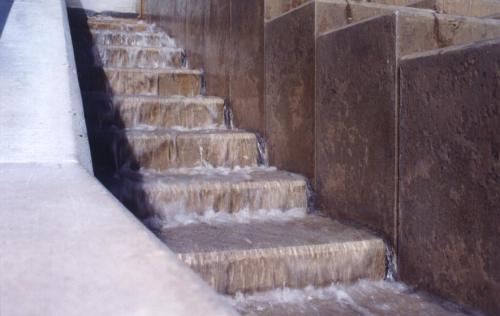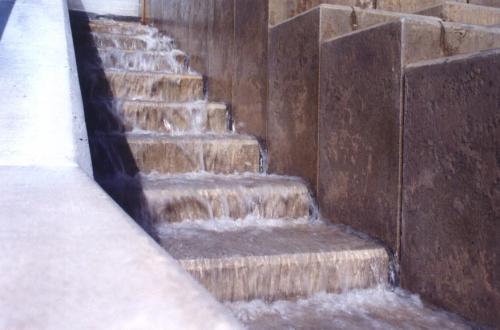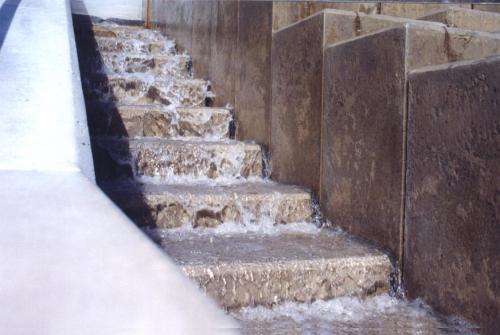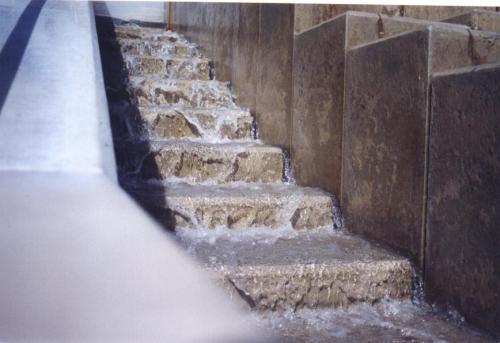shutter speed examples







|
These are photographs of the same waterfall taken at different shutter speeds. The f-stop has been adjusted in each case to keep the exposure acceptable. Fig. 1 uses a shutter speed of 1/60 second. This is about as slow a shutter speed as you can use for moving subjects. Any slower and the subject blurs unacceptably. Figs. 2 and 3 use steadily faster shutter speeds. Note how the motion of the water is "frozen". You begin to see individual drops instead of a smooth flow. Water that appears to fall in a "stream" is really falling as a series of discrete drops. Only photography with very fast shutter speeds reveals this fact. Because of this, photographers often choose to photograph water with slower shutter speeds in order to preserve the appearance of a smooth stream. In Fig. 4 the water shows no blurring from motion. However, another effect appears in this photo. The portion of the wall in the foreground is now blurry and defocused. Why? Because in order to compensate for the increasingly faster shutter speeds, the photographer has had to open the aperture more and more each time to let in more light. As the aperture is opened, the depth of field decreases. The focus is set for the water at the center of the frame, but objects in the foreground and background fall outside the focus zone and are blurry. |





